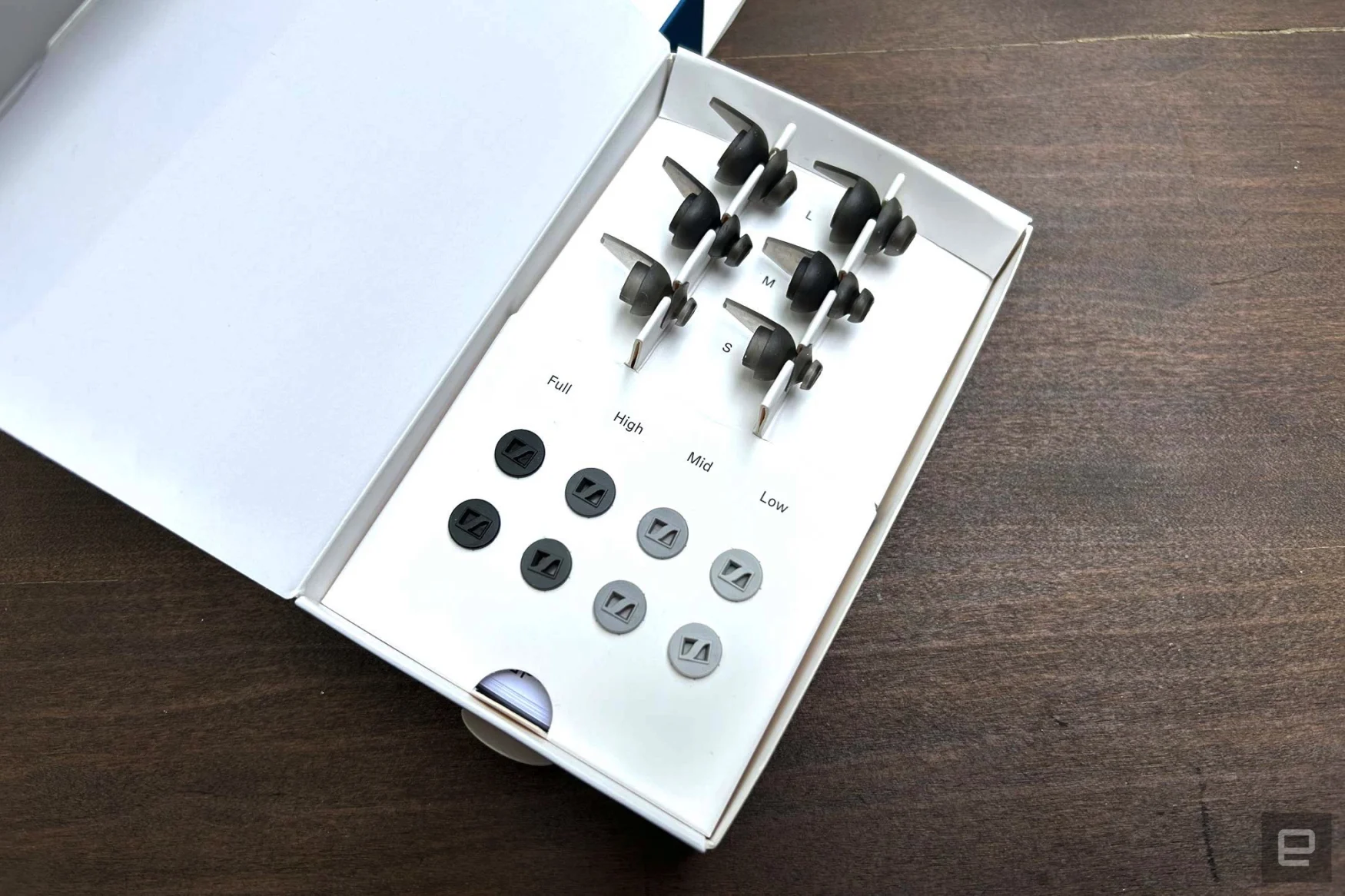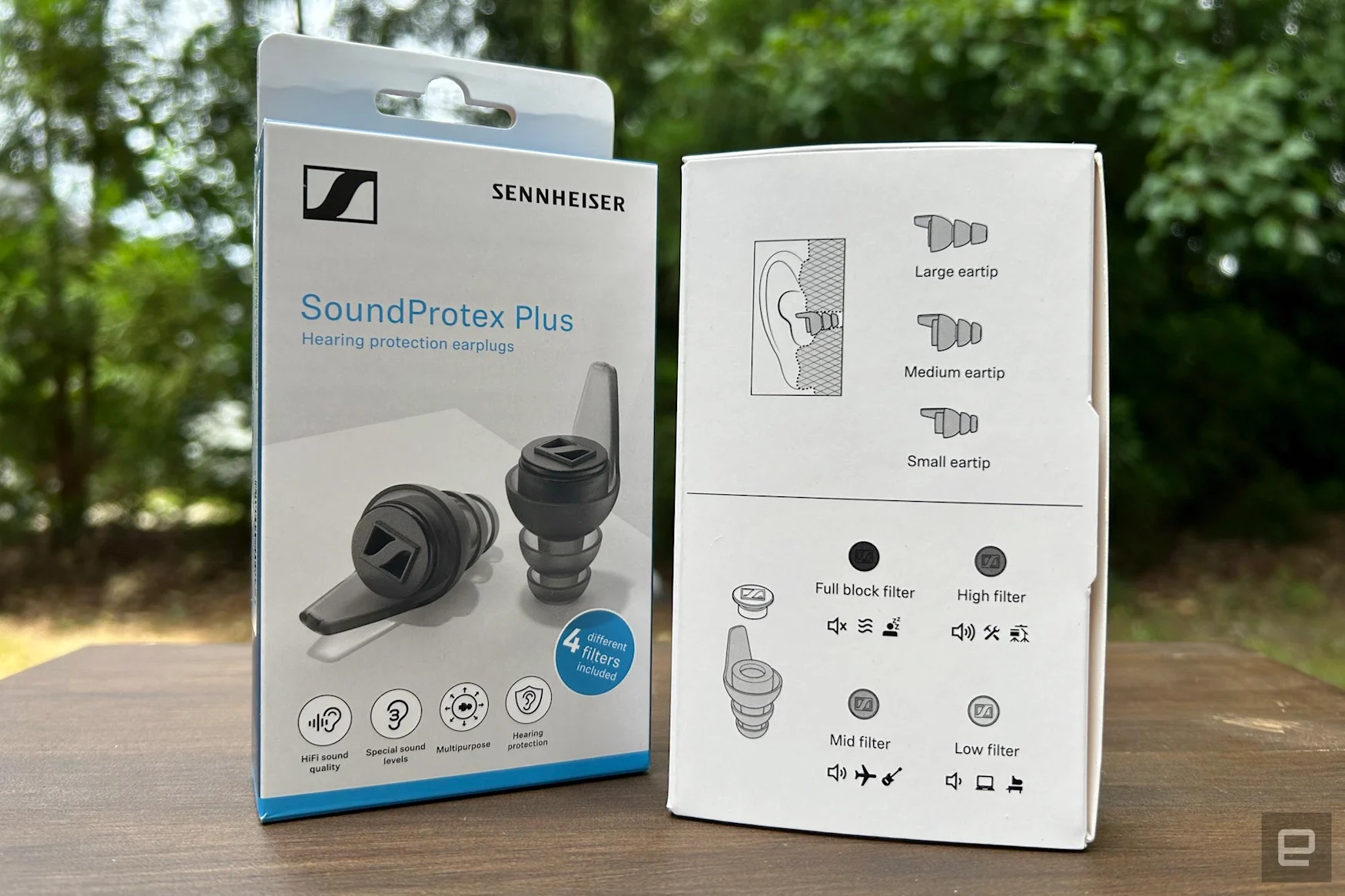I nearly destroyed my hearing during my 20s. I went to a lot of shows in tiny venues with way-too-loud PA systems. Occasionally, I’d remember to grab a set of cheap foam earplugs from a gas station beforehand, but more often than not I just went without. Thankfully, I was never one to enter the pit, so perhaps standing near the back of the room spared me from any severe damage. I have some mild tinnitus, but no hearing loss, and I’m able to fully enjoy all music as I approach 40.
In my 30s though, I got wise to ear protection at concerts. Unless it’s an outdoor show, I’m taking earplugs. However, those generic foam bits completely close off your ear canal and can really kill the vibe. The sound comes through muffled and boring, and you’re likely to miss the more subtle instrumentation. A number of companies have tried to tackle this challenge, offering various takes on filtered audio that allows good live sound to come through with an appropriate level of hearing protection.
Sennheiser recently released its SoundProtex earplugs with the aim of doing just that. They’re soft and flexible, made of medical-grade TPE (thermoplastic elastomers) that don’t contain plastics or other potential irritants for sensitive skin. These aren’t single-use earplugs either – you can rinse them under water before storing them until the next event. There’s also a small pouch included so the individual plugs aren’t rolling around in the bottom of your bag.
The SoundProtex earplugs come in two versions: the regular and the Plus. Each one has three sets of the cone-shaped ear tips in small, medium and large sizes. You can adjust the level of decibel reduction by swapping out tiny round acoustic filters on the outside of each plug. The key difference here is the SoundProtex only comes with the full block filter while the SoundProtex Plus comes with additional low-, medium- and high-blocking filters. The ear tips alone don’t provide any significant protection.
Since each filter offers a different level of protection, they’re meant for different activities. Sennheiser says the low-block filter should be used for “non-amplified concerts,” offices or bars and restaurants. The medium-block option is suitable for festivals, events and traveling while the high-block are appropriate for loud music, motorsports and using power tools. Those three all have different noise reduction ratings (NRR, single number rating or SRR in the EU) for their level of decibel reduction. Low-block starts out at 10dB, medium is 17dB and high is 20dB. Sennheiser doesn’t disclose a value for the full-block filter, but the goal there is to make things air and water tight to eliminate as much noise as possible (yes, you can wear them in the pool too). While that option does drastically reduce the environmental roar, they don’t create complete silence. But, it’s certainly enough to help you tune out the world.
Each of the acoustic filters are made with a “tuned” membrane and sound-dampening mesh. Sennheiser says that the latter equally reduces high and low frequencies. The company further explains that the SoundProtex filters are designed to allow just enough of the higher frequencies through to maintain ambient awareness and the ability to have a conversation while you’re wearing them.

Photo by Billy Steele/Engadget
I was able to test Sennheiser’s claims for the SoundProtex Plus at a recent Thrice show for the band’s Artist In The Ambulance 20th anniversary tour. Thrice is one of my favorite bands ever, and this is my favorite album of theirs, so I didn’t want gas station earplugs to ruin the nostalgia. Throughout the show, I used the large eartips with the mid-block filter while my wife wore the medium size with the high-block option. Not only did the SoundProtex offer a superior experience to generic foam earplugs, they are very comfortable to wear for hours at a time. Which, in my opinion, is equally as important.
While the SoundProtex does indeed dull the high- and low-end frequencies, I didn’t notice a considerable amount of bassy thump missing from the kick drum or treble absent from the guitars. Sure, the overall sonic curve is a bit subdued with these earplugs in, but it doesn’t alter things enough to make me consider going without them. It’s a huge improvement over foam earplugs, and frequent concert goers will get a lot out of the investment. My Apple Watch was consistently hitting 100-105dB on the noise meter, so I would’ve certainly left with my ears ringing. Instead, I was able to drive home normally – no shouty post-show conversations required.
The SoundProtex doesn’t facilitate conversations quite like Sennheiser describes. I had trouble speaking with the bartender, which forced me to awkwardly resort to hand motions. I also had issues understanding my wife with the earplugs in, so eventually I would just pull one out to chat. Results are better in a quieter environment, without the loud between-set tunes, but if you’re planning to converse while wearing the SoundProtex, the low-block filter is the best option. Of course, that limits your protection so you can only use it in certain environments.

Photo by Billy Steele/Engadget
Sennheiser designed the SoundProtex ear tips with a pull tab on the outside. This makes removing the earplugs easy since they’re almost entirely pushed into your ear canal once they’re properly situated. This tiny tab gave me the peace of mind that I’d be able to get the things out, which is not to be overlooked.
One issue concert-goers may have is the price: the SoundProtex is $39.95 and the SoundProtex Plus is $79.95. A 12-pair box of foam earplugs is $3.49 at my local Target. A more appropriate comparison is Eargasm’s high-fidelity earplugs. A set of those comes with one filter with an NRR of 16dB and two sizes of eartips for $41.88. What’s more, Eargasm’s ear tip design is nearly identical to the SoundProtex and they’re made of hypoallergenic soft silicone. There’s also Loop’s line of earplugs which were among the first to promise some degree of hearing protection at concerts without significantly harming the quality of the sound. There are a few options from the company, but the Engage are a good place to start. $34.95 buys you 16dB of noise reduction with four ear tip sizes that are more akin to what you put on the ends of your earbuds.
The SoundProtex Plus is certainly a comfy hearing protection solution that gives you options in terms of the level of noise blocking. They are more expensive than their non-customizable competition, but if you’re just using earplugs at concerts you might not need to swap out filters anyway. However, if you want to adjust how many decibels are being stifled based on what you’re doing, the extra investment will likely enhance your experience. Either way, a set of earplugs designed specifically for use at live music events are a big improvement over the yellow foam plugs. It’s a matter of how much, or how little, you want to dial in the protection.
All products recommended by Engadget are selected by our editorial team, independent of our parent company. Some of our stories include affiliate links. If you buy something through one of these links, we may earn an affiliate commission. All prices are correct at the time of publishing.